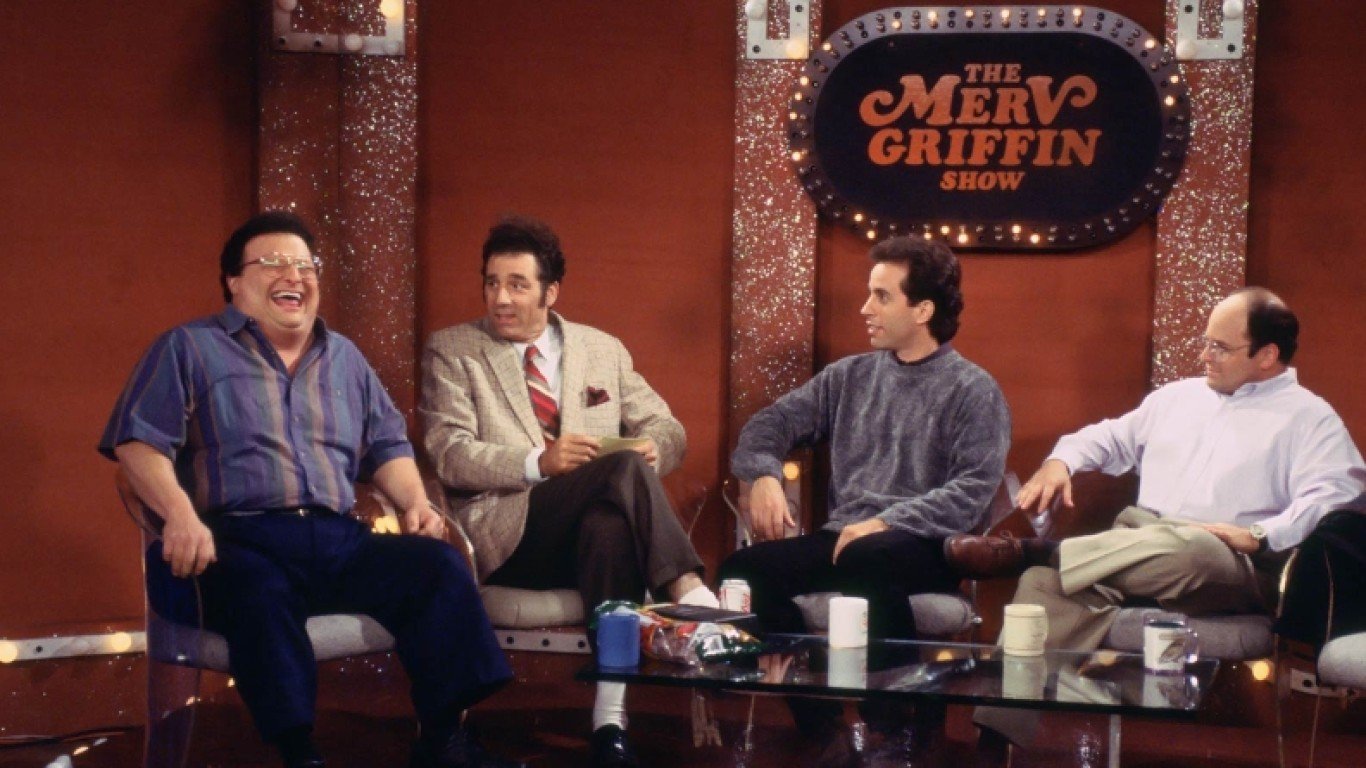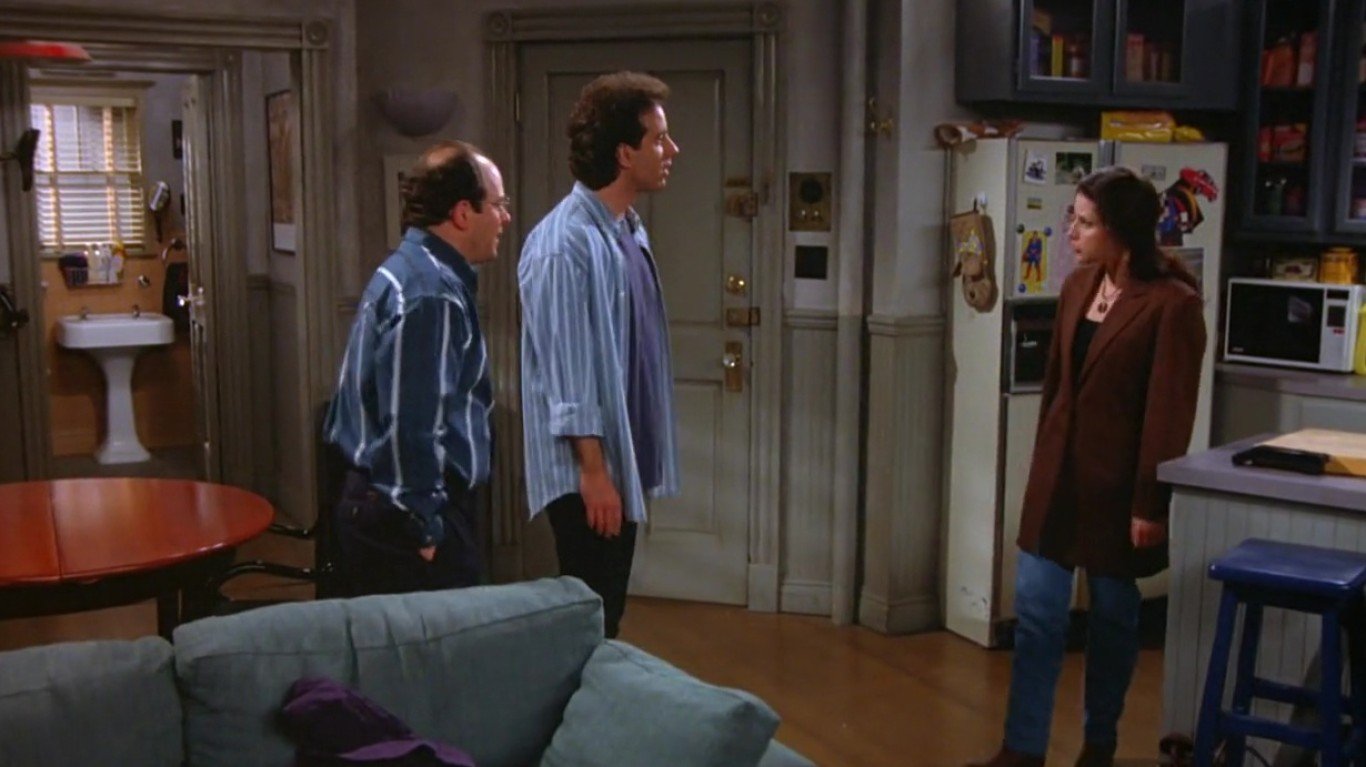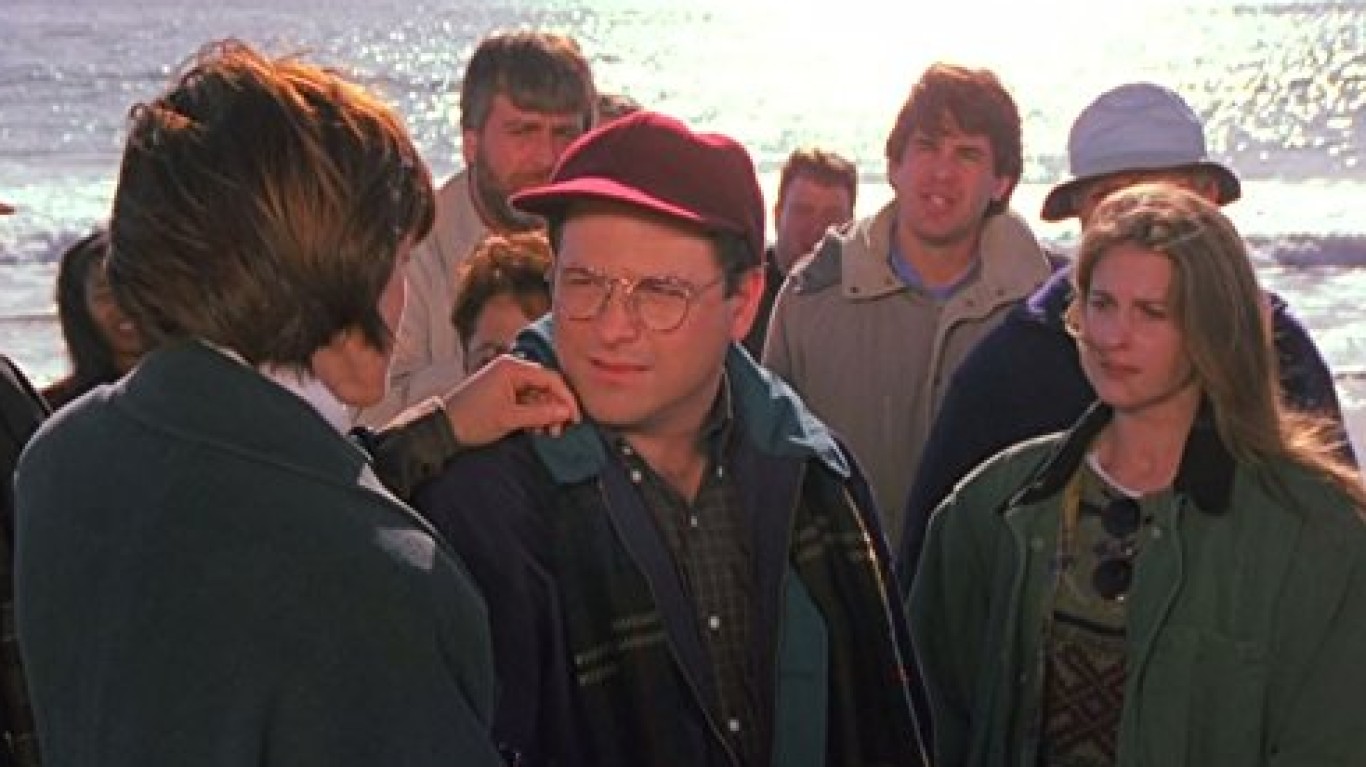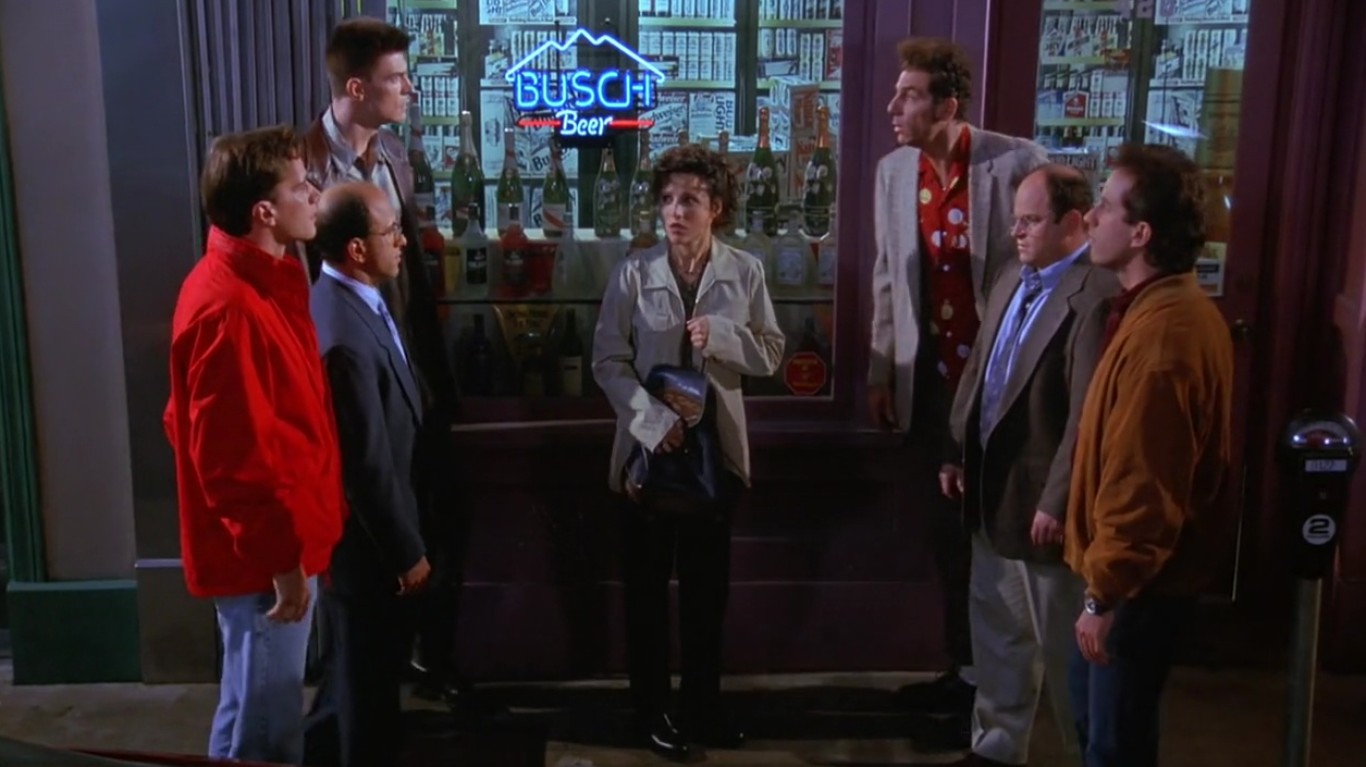Special Report
See All Seinfeld Seasons Ranked, From Worst To Best
Published:
Last Updated:
For a show that was ostensibly about nothing, “Seinfeld” definitely had a lot to say. The New York City-set exploits of Jerry (Jerry Seinfeld), George (Jason Alexander), Elaine (Julia Louis-Dreyfus), and Kramer (Michael Richards) kept us in hysterics for nine classic seasons from 1989 to 1998, and fired on all cylinders for just about all of them, even after creator Larry David left after season 7.
One of the (many) incredible things about “Seinfeld” was the fact that so many episodes weren’t just classic on one level; each of their intersecting storylines would have made them classic episodes in its own right. To this day, for example, we’re still awed when we realize that the legendary “Soup Nazi” episode is also the one where Elaine’s armoire is stolen and where Jerry and his new girlfriend over-affectionately call each other “shmoopy.”
In spite of – or perhaps because of – its strict adherence to a mantra of “no hugging, no learning,” “Seinfeld” is widely regarded as perhaps the funniest sitcom of all time, and the humor still really holds up to this day. That said, certain seasons of the show are better than others. These are the worst to best seasons of “Seinfeld,” according to its average audience score on Rotten Tomatoes.

After the pilot (called “The Seinfeld Chronicles”) wasn’t picked up (it’s most notable for being Elaine-free), an NBC exec who believed it had potential ordered four additional episodes. By the end of the short season – which doesn’t include any that are true classics, except for perhaps the final episode, “The Stock Tip,” in which Jerry and George both invest money but can’t figure out when to sell – most of the show’s conventions and characters are firmly in place.

“Seinfeld”’s ninth and final season, Season 9 is generally regarded as relatively weak (as far as “Seinfeld” goes, at least), but there are still several great episodes in the bunch, including “The Serenity Now” (the phrase George’s father screams whenever he gets worked up), “The Merv Griffin Show” (in which Kramer finds an old talk show set in a dumpster), and “The Slicer” (where Kramer buys a meat slicer and George tries to get himself airbrushed out of his boss’ photo).

“Seinfeld” truly came into its own in season 2, which also saw the introduction of significant new characters including Newman and Uncle Leo and the addition of Larry Charles to the writing staff. Classics include “The Pony Remark” (in which Jerry thinks he may have killed an old lady after unknowingly offending her at dinner), “The Deal” (in which Jerry and Elaine think they’ve come up with the perfect template for having sex while also remaining friends), and “The Chinese Restaurant” (in which they’re stuck in a nightmare of waiting for a table at a Chinese restaurant).

Season 8 was the first year in which Jerry Seinfeld himself took over creative control after Larry David left, and the show became a bit more surreal and absurdist. Classic examples of this new direction include “The Bizarro Jerry” (in which Elaine meets a trio who are the exact opposites of Jerry, George, and Kramer and Jerry dates a woman with “man hands”), “The Comeback” (in which George can’t think of the perfect retort when one of his coworkers insults him), and “The Little Jerry,” in which Kramer gets a pet rooster.

Michael Richards won an Emmy for this season, which also saw the episode “The Mango” (in which Kramer is banned from his favorite fruit shop) get nominations for its writing and direction. We’re getting into “too many classics to name” territory, but gems include “The Puffy Shirt” (where Jerry unknowingly agrees to wear a pirate shirt on TV because of a “soft talker”), “The Cigar Store Indian” (in which Jerry offends a Native American love interest), and “The Opposite” (in which George does the opposite of his usual inclinations, ending up with a beautiful girlfriend and a job with the Yankees).

Notable for being Larry David’s final season as well as the last season that features Jerry doing standup at the beginning and end of episodes, Season 7 is full of classics. These include “The Shower Head” (when Kramer and Jerry hate their new low-flow shower heads and Elaine tests positive for opium after eating a poppy seed muffin), “The Rye” (in which Susan’s and George’s parents meet for the first time), and the truly iconic “The Soup Nazi,” revolving around an extremely strict soup vendor and his famous catchphrase, “No soup for you!” The season ends in polarizing fashion, with George’s fiancee Susan unceremoniously dying.

Season 4 is best remembered for its two major story arcs, in which George and Jerry try to make a TV pilot for NBC and George begins his relationship with Susan. Legendary episodes include “The Junior Mint” (when Jerry can’t remember the name of an old girlfriend except that it rhymes with a part of the female anatomy), “The Smelly Car” (when a valet they dub “The Beast” stinks up Jerry’s car), and most famously “The Contest” (when they place a bet to see who can go the longest without pleasuring themselves – one of the funniest episodes of television of all time).

Season 6 is most notable for behind-the-scenes maneuvering; Tom Cherones, who had previously directed nearly every episode, was replaced by Andy Ackerman. This season is chock full of classics, including “The Pledge Drive” (in which seemingly everyone starts eating candy bars with a knife and fork), “The Fusilli Jerry,” (in which Kramer makes a statue of Jerry out of fusilli pasta and gets new license plates that say “ASSMAN”), and “The Understudy,” (in which Jerry and George are suspected of deliberately injuring Bette Midler during a softball game, and Elaine starts working for J. Peterman).

Season 3 is notable for being the first season in which each character gets their own storyline in each episode, and it also firmly cemented character traits including Elaine’s quirkiness, George’s lying, and Kramer’s supreme self-confidence. The end result is a nearly flawless season, with timeless classics including “The Note” (when George doubts his sexual orientation after receiving a massage from a man), “The Library” (when Jerry is fined for a book he got from the library while in high school), and “The Boyfriend,” which famously introduced Mets star Keith Hernandez as Elaine’s boyfriend.
Are you ready for retirement? Planning for retirement can be overwhelming, that’s why it could be a good idea to speak to a fiduciary financial advisor about your goals today.
Start by taking this retirement quiz right here from SmartAsset that will match you with up to 3 financial advisors that serve your area and beyond in 5 minutes. Smart Asset is now matching over 50,000 people a month.
Click here now to get started.
Thank you for reading! Have some feedback for us?
Contact the 24/7 Wall St. editorial team.